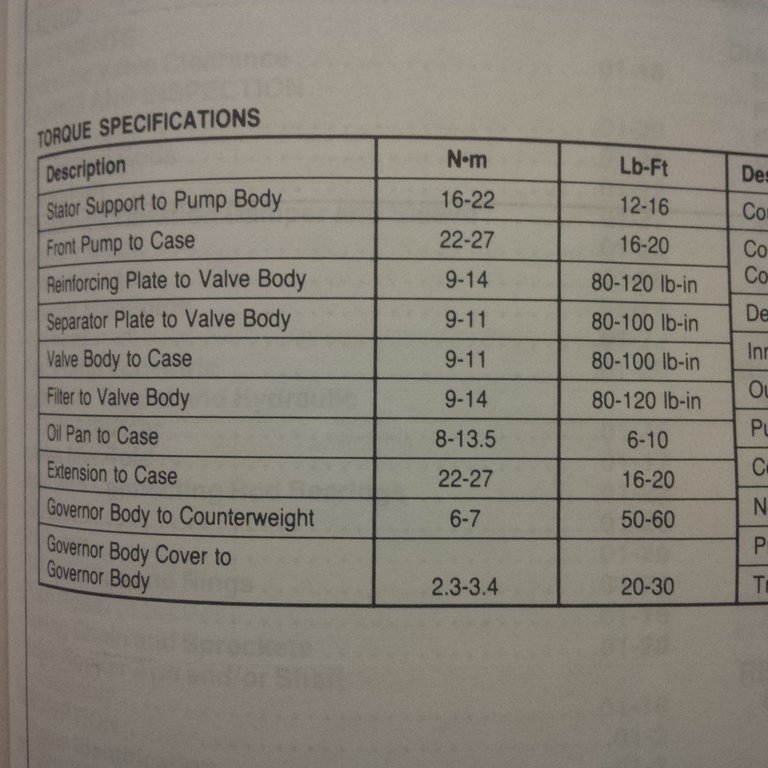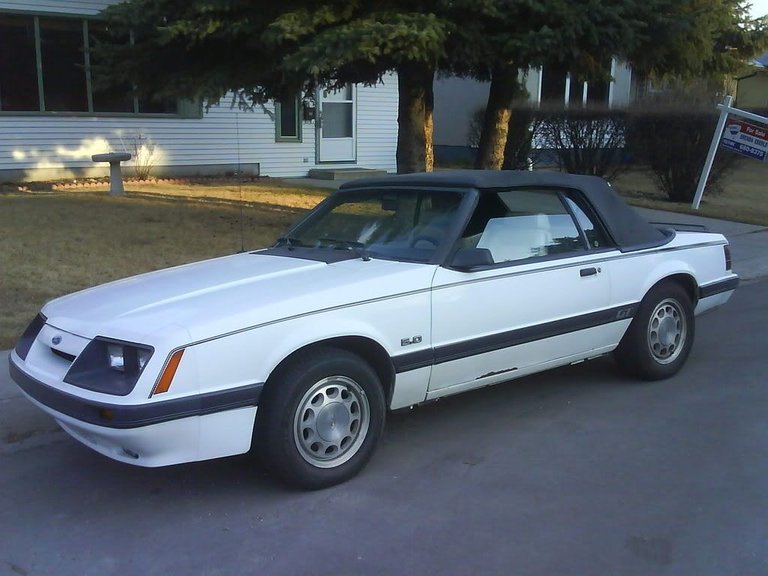Ok, this took me longer to figure out than I thought it would.
A pal of mine, (who will remain anonymous until he reads this and grants permission to use his name) had trouble sealing the automatic transmission pan on his ford pick-up. I have a similar transmission in Princess, my '86 Mustang GT Ragtop. I was worried about the transmission service, I bought the Hastings automatic transmission Pan Gasket & Filter and started in on it.
The original gasket had no sealer on it. It was brittle. It had shrunk. The bolts were loose. This was great news - I was certain that I found the source of my leak. I got out the aerosol brake clean and cleaned the pan. Princess is showing 288,000 km on the clock and her AOD pan only had minor dark dust in the bottom. This car is for cruising - i'd have no issue driving it 1200-1500km on Canadian highways (in the summer) - I don't abuse things.
I soaked the transmission pan bolts in transmission fluid and picked the grime off the heads with a dental pick. (Thanks Dan for the box of dental scalers!) The bolts were wet with fluid anyway.
The filter is held in place with three bolts (8mm head) has two seals between the filter and the valve body. The fluid pick-up is at the back of the transmission filter. There is a rubber gasket. Smear some ATF on it and push it into place.
The bolt holes in the transmission pan gasket are an interference fit to the bolt threads. This is brilliant and handy because it holds every bolt in place and it keeps the gasket aligned to the pan during installation. I installed the bolts loose because I wanted to confirm the torque specification..
After washing my hands and conferring with the original, old school 'Shop Manual' I found the table of torque specs - This is what got me to thinking...

When one uses a torque wrench and tightens a bolt to the torque specification, it is generally assumed the the bolts and holes are clean and dry. When an engineer writes a specification for assembly, it's for the assembly of new components in a factory, on an assembly line.
This assumption of fully clean bolt holes for any automatic transmission in recent service is ABSURD!
An oiled bolt will thread in easier than a dry bolt. Estimated torque requirements for oiled bolts range from 40%-60% of the DRY spec..
http://www.eng-tips.com/viewthread.cfm?qid=173061
This means that if you torque wet transmission pan bolts to the dry spec It's over-tightened by 2.5-1.67 TIMES what is needed to compress and seal the gasket. It's clear to me now why so many used transmission pans leak and have distorted bolt holes.
So, time for some Math and 'SWAGing' (Scientific Wild-Ass Guessing).

The dry spec is 6 to 10 ft-lb. I have an inch-lb torque wrench. So 72 to 120 inch-lb.
I set my torque wrench for 50 inch-lb knowing that the bolts and the holes are wet with Automatic Transmission Fluid.
This should be the equivalent of 50/0.4 (125 inch-lb)to 50/0.6 (83.3 inch-lb).
If I had just cranked the wrench up to 120 inch-lb and tightened the wet bolts - the worst case equivalent dry torque would be 120/.4 = 300 inch-lb or 25 ft-lb - quite far from the maximum of 10 ft-lb!!
So, this explains why the bolt holes in transmission pans are almost always distorted without being 'over tightened'...
I tightened the bolts in a circular pattern and did three full laps until the bolts didn't move under 50 inch-lb. I used only the 'Ultra-Cork' gasket from the Hastings Filter kit - no sealer - nothing else. Then I lowered the car off the jack-stands - Then came the moment of truth - I put the first 4 litres in and started the car - It fired right up and I gave it 4 litres more. the service calls for a little over 8L of Dex/Merc III for drain and fill.
There is not a single drip weeping out of that transmission.
Done - Total win.
Will report back at a later date.

Perfectly Dry 2 weeks later - epic win!
Convertible - still dry - three months later.
1997 Aerostar with 5R55E - transmission service yesterday - same method - perfectly dry.